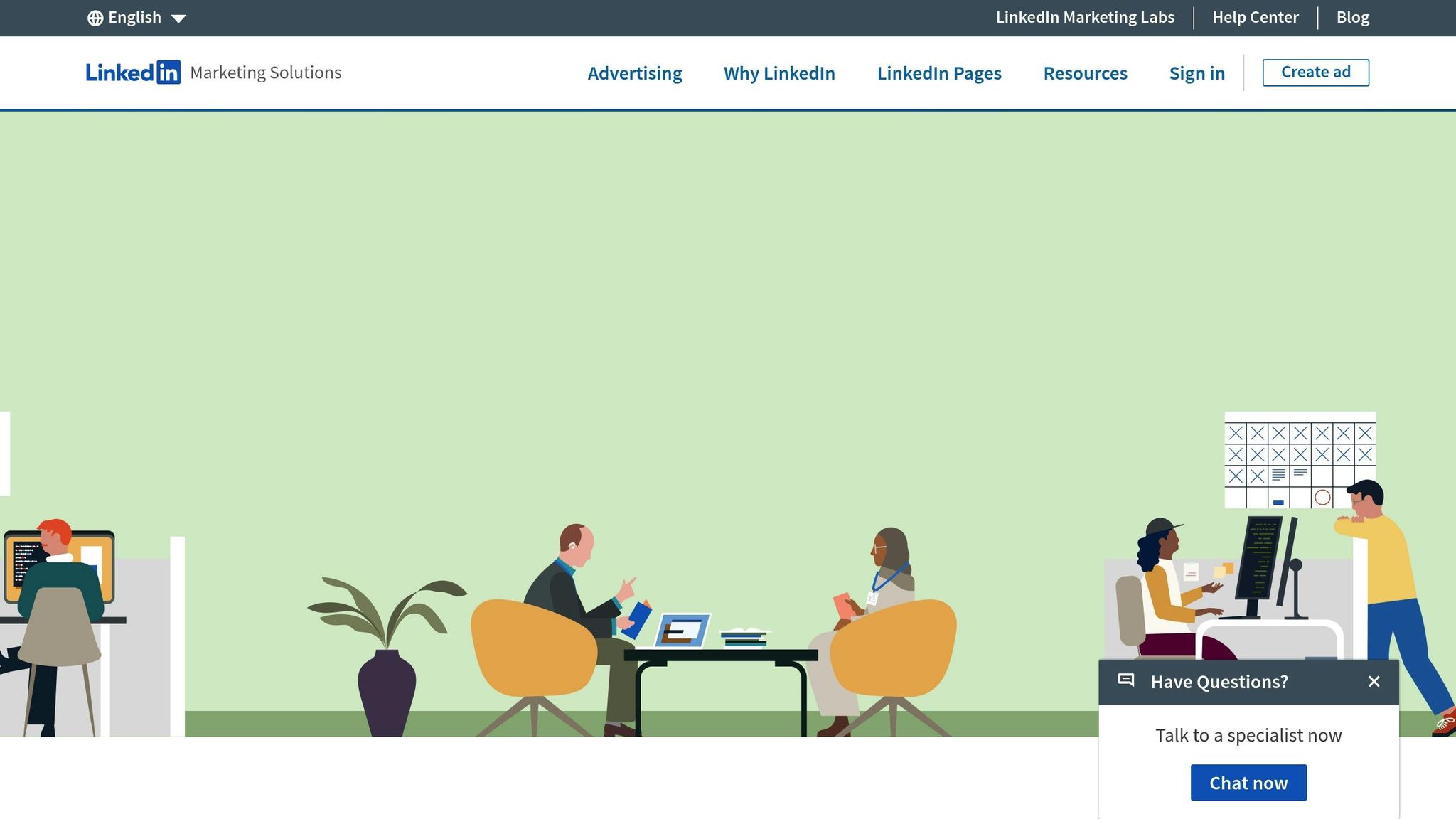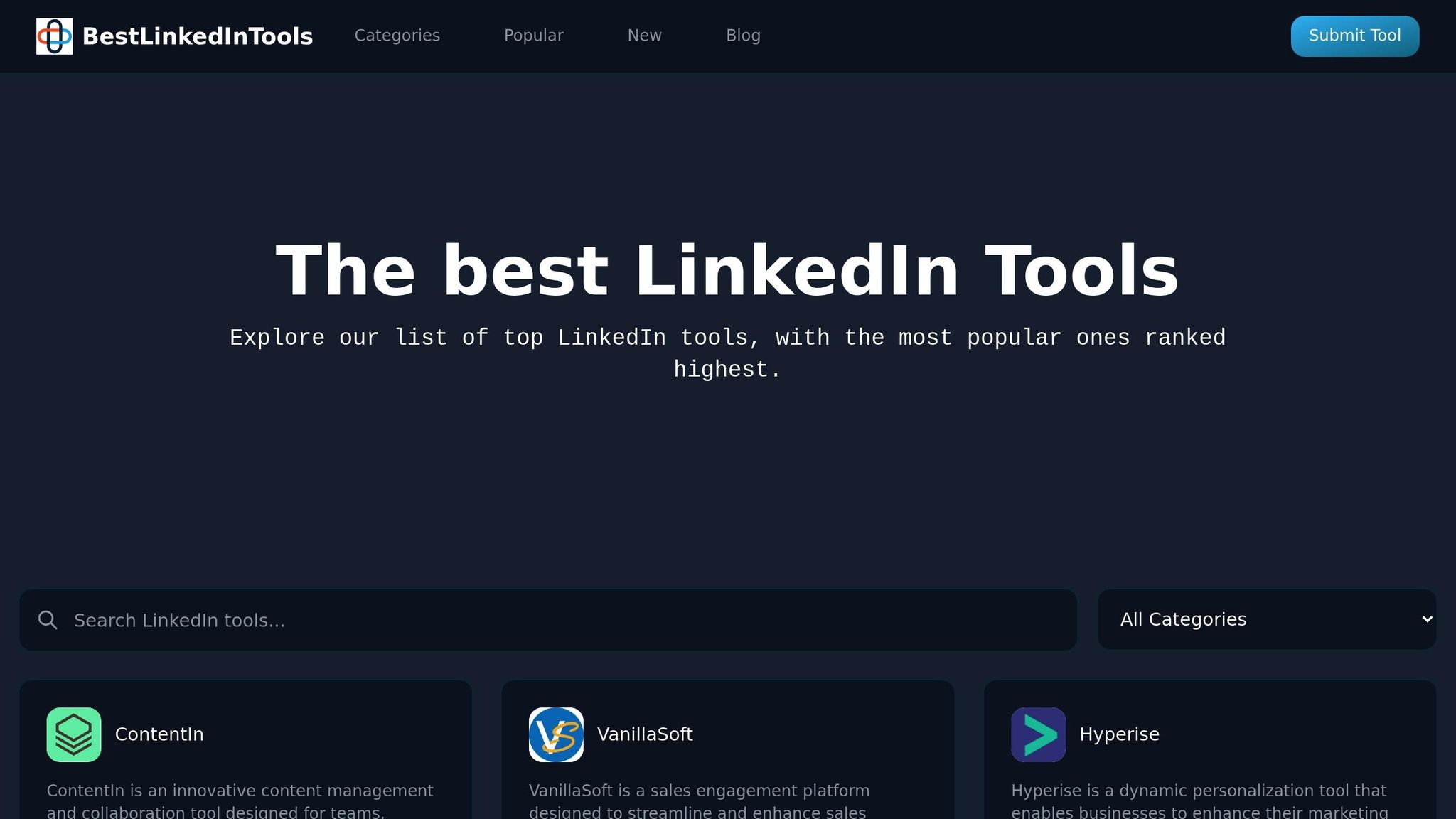Best Practices for LinkedIn Campaign Data Tracking

Best Practices for LinkedIn Campaign Data Tracking
Tracking LinkedIn campaigns effectively is all about improving ROI and understanding your audience. Here’s how you can stay on top of your campaigns:
- Key Metrics to Track:
- Engagement: Click-through rates (CTR), likes, comments, and shares.
- Reach: Impressions and unique audience reach.
- Costs: Cost per click (CPC), cost per lead (CPL), and return on ad spend (ROAS).
- Audience Insights: Demographics, job roles, industries, and seniority levels.
- Tools and Setup:
- Use LinkedIn Campaign Manager to track performance.
- Add UTM parameters for detailed analytics.
- Automate data collection with API integrations and custom alerts.
- Optimize Campaigns:
- Use dashboards to monitor performance.
- Conduct A/B tests on content, audience targeting, and bidding strategies.
- Adjust budgets and messaging based on audience response.
Build a LinkedIn Ads Report in GA4 in 5 Easy Steps: LinkedIn ...
Essential LinkedIn Campaign Metrics
Tracking the right metrics can help you fine-tune performance and make smarter decisions about where to allocate your resources.
Reach and Visibility Stats
These metrics show how far your content is spreading across LinkedIn:
- Impressions: How often your content appears in users' feeds.
- Unique Reach: The number of individual professionals who see your content.
- Share of Voice: How your content's visibility compares to competitors in your industry.
- Frequency: How many times, on average, each user sees your content.
Engagement Rates
Engagement metrics tell you how well your audience connects with your content:
- Click-through Rate (CTR): The percentage of people who click on your content.
- Social Actions: Total likes, comments, and shares.
- Video View Rate: How many users watch your videos and for how long.
- Dwell Time: The amount of time users spend interacting with your content.
Cost and Conversion Data
These metrics help you measure your return on investment and spending efficiency:
- Cost per Click (CPC): How much you pay for each click on your ad or content.
- Cost per Lead (CPL): The cost of generating a single lead.
- Cost per Conversion: How much it costs to drive a specific action, like a signup or purchase.
- Return on Ad Spend (ROAS): The revenue generated for every dollar spent on your campaign.
Audience Analysis
Understanding your audience is crucial. Keep an eye on:
- Demographics: Age, location, and company size of your audience.
- Job Functions: The roles or departments your audience belongs to.
- Industry Breakdown: Which industries your audience represents.
- Seniority Levels: The career stages of the professionals engaging with your content.
Choose metrics that align with your campaign goals. For brand awareness, focus on reach and impressions. For lead generation, prioritize conversion rates and cost-per-acquisition. These insights set the stage for effective data collection, which we'll cover next.
Data Collection Methods
LinkedIn Campaign Manager Setup

Set up essential tracking elements to monitor campaign performance:
- Conversion tracking: Add the LinkedIn Insight Tag to your website's global header to track all post-click actions.
- Custom event triggers: Specify triggers for actions like form submissions, content downloads, or demo requests.
- UTM parameters: Apply consistent UTM tagging to track campaign performance:
utm_source=linkedinutm_medium=socialutm_campaign=[campaign_name]utm_content=[ad_format]
Once Campaign Manager is properly configured, you can automate data flows for real-time updates.
Data Collection Automation
Streamline data collection to save time and reduce errors:
- API integrations: Connect LinkedIn's API to your data warehouse for daily automated syncs.
- Automated reporting: Schedule regular data exports to maintain consistent reporting.
- Custom alerts: Set up notifications for key metrics, such as:
- CTR changes (±20% from baseline)
- Budget usage hitting 80%
- Unusual conversion rate patterns
- Sudden engagement spikes or drops
These automated processes ensure your performance dashboards receive accurate, up-to-date data.
Performance Dashboard Creation
Accurate, automated data feeds allow you to build dashboards that clearly display campaign results.
Design dashboards to focus on critical metrics:
- Key metric categories:
- Campaign Overview
- Audience Insights
- Content Performance
- Cost Analysis
- Conversion Tracking
- Cross-channel integration: Combine LinkedIn data with website analytics, CRM information, email performance, and sales pipeline metrics.
- Custom calculations: Create advanced metrics for deeper analysis:
- Lead quality score
- Customer acquisition cost
- Campaign ROI
- Engagement velocity
Data Analysis and Campaign Updates
Use detailed dashboards to review your data and make timely adjustments to your campaigns.
Measuring Content Performance
Monitor how your content is performing by focusing on key metrics like:
- Click-through rates (CTR): Analyze CTR based on different content types.
- Engagement rate: Calculate total interactions divided by impressions to see how engaging your content is.
- Dwell time: Check how long users stay engaged with your content.
- Shares and comments: Measure how quickly and frequently people are sharing or commenting on your posts.
Combine these metrics into scorecards that show both engagement and conversion rates to measure how effective your content truly is.
Audience Response Analysis
Break down your audience data to find out which groups respond best. Use a demographics matrix to compare key stats - like average CTR, engagement rate, and cost per lead - across different audience segments (e.g., senior leaders, mid-management, entry-level professionals). These insights can help you:
- Fine-tune targeting for the most responsive groups.
- Tailor content to better match specific audience profiles.
- Adjust ad spending to get better overall campaign results.
- Update messaging strategies based on engagement trends.
A/B Testing Methods
- Content and Audience Testing
Run A/B tests by changing just one variable at a time - like ad copy elements or audience attributes (e.g., industry, company size, job role, or location). - Budget and Bidding
Experiment with different bidding strategies, such as:- Manual vs. automated bidding
- Adjusting for time of day
- Optimizing for specific days of the week
- Allocating budgets across various campaigns
Keep tracking results until they’re statistically meaningful, then make gradual adjustments based on what works best.
LinkedIn Data Tracking Tools
LinkedIn Analytics Features
LinkedIn's built-in analytics, available through Campaign Manager, provides key metrics to track campaign performance. Here's what it offers:
- Performance Dashboard: View live data on impressions, clicks, and conversions.
- Demographic Insights: Analyze your audience by industry, job title, and company size.
- Custom Reporting: Export campaign data in CSV format for deeper analysis.
- Budget Tracking: Monitor daily spending and assess costs effectively.
With daily updates, you get a complete picture of your campaign's performance. For additional tracking options, check out the resources below.
LinkedIn Tools Directory

The LinkedIn Tools Directory is a go-to resource for discovering tools to enhance LinkedIn campaign tracking. It features:
- Reviews and detailed breakdowns of analytics tools.
- User ratings and recommendations to guide your choices.
- Regular updates to tool listings.
- Easy-to-navigate, categorized directories.
These resources can help you expand beyond LinkedIn's native analytics to uncover deeper insights.
Advanced Analytics Tools
For even more precise tracking, advanced analytics solutions build on LinkedIn's tools and curated directories. They bring additional features to the table, such as:
Data Integration Features
| Feature | Purpose | Benefit |
|---|---|---|
| API Integration | Sync with CRM systems | Track leads in real time |
| Cross-Channel Analysis | Compare performance across platforms | Centralized reporting |
| Automated Reporting | Schedule regular updates | Save time on reporting tasks |
When combined with LinkedIn’s analytics, these tools can elevate your tracking capabilities. Key features include:
- Real-Time Monitoring: Instantly view performance metrics as they update.
- Custom Alerts: Get notified when key metrics hit specific thresholds.
- Advanced Segmentation: Break down data using custom parameters.
- Predictive Analytics: Use past data to forecast future campaign performance.
Conclusion
Effective tracking is the backbone of LinkedIn campaign success. Combining LinkedIn's Campaign Manager with specialized tools can give you a clearer picture of your campaign's performance.
Here’s what matters most for strong data tracking:
- Consistent Monitoring: Check key metrics regularly using automated dashboards to make quick adjustments.
- Integrated Analytics: Combine LinkedIn's native tools with advanced solutions for a more complete view.
- Decisive Actions: Use real-time data to fine-tune campaigns and allocate resources effectively.
By sticking to clear protocols and leveraging automation, you can streamline your tracking process. LinkedIn's Tools Directory is a great place to find resources that can boost your tracking efforts with detailed insights.
As LinkedIn continues to change, regularly updating your tracking methods is crucial to stay ahead.